
Interested in genealogy and family history research tools? Genealogy Assistant adds hundreds of custom features to online platforms like Ancestry, MyHeritage, FamilySearch and more! Click here to try it out
Focus your research into purposeful discovery
Effective research means tackling big challenges, but it also means navigating countless repetitive tasks like endless tab-switching, data entry, and that mental fatigue that creeps in when information feels scattered everywhere.
This post will show you tools for building a research workflow that seamlessly works for you along your research journey. We’ll explore applications and techniques that streamline your process, lighten your mental load, and help you stay focused on the deep analysis that matters most. Rather than forcing you into rigid systems, I’ll share how to create workflows that feel sustainable and support what you’re really interested in: uncovering the connections that reveal our fascinating family histories. You’ll walk away with a few practical strategies and tools to focus your research into purposeful discovery.

What is a research workflow?
Think of a research workflow as the backbone of your family history research. It’s the collection of tools, techniques, and go-to processes that shape how you conduct research, regardless of which ancestor you’re chasing down. It’s not about what we’re doing, it’s about how we’re doing it. A strong workflow helps with those time-consuming, repetitive tasks that fill our research days such as juggling multiple browser tabs, hopping between applications, sorting through DNA matches, applying citation formats, and transcribing documents.
When you design an effective workflow, these everyday challenges become smooth, repeatable processes that work across all your research projects, such as using predefined templates that log your discoveries with a single command, identifying high value dna matches at a glance, or tracking the X-DNA path of an ancestor with the press of a button.
This thoughtful approach reduces friction and mental strain by eliminating those cumbersome multi-step processes, resulting in more brainpower available for high-value analytical work and sustained concentration, the focused zone where researchers truly shine.
In this optimized state, procedural roadblocks fade into the background, freeing you to focus on real problem-solving. Through intentional workflow design, you can build systems that handle the tedious stuff while amplifying your analytical strengths.

The importance of flow state
Flow state is that magical, deeply focused mindset where distractions fade away, time seems to disappear, and your skills perfectly match the challenge in front of you. It’s the sweet spot where you’re operating at your absolute best.
In family history research, flow is when we make our best discoveries. Patterns jump out at you, records snap into place, and insights surface naturally, as if the pieces were just waiting for you to connect them. This is flow at work, transforming what could feel like an uphill battle into a brick wall being broken down.
Achieving a flow state isn’t by luck or through natural talent. It’s about setting up the right conditions. You need crystal-clear goals like “I’m going to verify John Harrington’s birthplace today”, minimal distractions, and complete confidence in your tools and processes. They should lift you up, not slow you down. When you intentionally craft your research environment to nurture these elements by cutting out interruptions, automating the repeatable stuff, and keeping your objectives crystal clear, you create space for deep, uninterrupted thinking.
Flow isn’t just a productivity trick, it’s about building unstoppable momentum that draws us back to our research session after session, energized by passion rather than drained by frustration. As genealogists, we’re perfectly positioned to harness this as our work naturally demands the focus, creative thinking and persistence that flow amplifies.

Cultivating flow in family history research
Family history research demands sustained concentration and solid analytical thinking. We’re constantly weaving together multi-generational stories from diverse sources like vital records, legal documents, oral histories and more, however several everyday obstacles can derail our efficiency.
Creating optimal research conditions means systematically clearing away these roadblocks. Start with a focused methodology where you set specific research goals before you dive in, something like “What records can confirm John Harrington’s First World War service?” This focus prevents those distracting rabbit holes we all know too well. It’s important to block out uninterrupted work time with notifications turned off to protect your concentration, allowing yourself space to do your best research.
Building effective research habits requires tools that smooth out operational bumps and handle routine tasks automatically. This prevents constant task-switching and decision fatigue, letting you follow structured workflows that keep momentum going while maintaining deep engagement with your source materials.
When we’re working efficiently our analytical powers soar and pattern recognition sharpens. This systematic approach helps to accelerate progress while keeping our family history research engaging and rewarding over the long term.
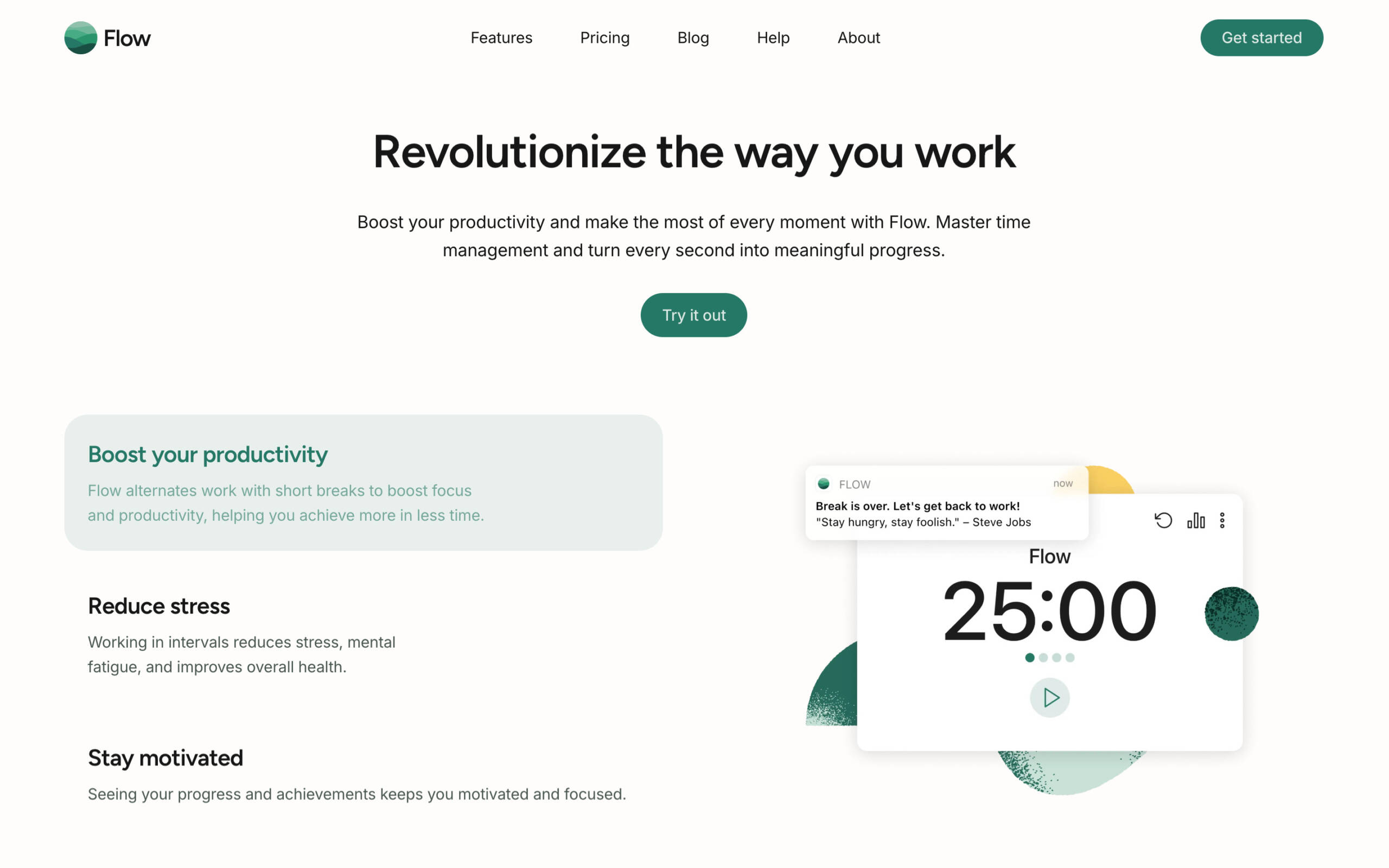
The Pomodoro Technique
Building on our focused objectives and distraction-free environments, the Pomodoro Technique offers a simple framework for maintaining concentration through timed work sessions. Francesco Cirillo developed this approach using 25-minute focused bursts followed by 5-minute breaks, with longer breaks after every four cycles.
For family history research, this technique structures your sessions to prevent mental overload while keeping your attention sharp. Start by picking one specific task such as analyzing a probate record or organizing research notes on a specific person. Set your timer and commit to that one thing for the full interval. This locked-in timeframe intensifies your focus and cuts down on procrastination. After each session, I record what I did in my research log.
The Pomodoro break periods serve real cognitive purpose, preventing mental fatigue while giving your brain time to process and consolidate what you’ve learned. These brief pauses can spark subconscious insights, potentially revealing fresh approaches to puzzling evidence. Over multiple cycles, you’ll build tangible progress, document advances, while working towards completing attainable objectives.
The rhythm between focused work and structured recovery supports sustained analytical thinking while establishing productive research habits. The Pomodoro Technique requires little technology (you could use an egg timer) but delivers significant results in our family history research.
Try it out:
- Flow (MacOS, iOS) – Free version available – https://www.flow.app
- Pomotroid (MacOS, Windows) – Freeware – https://www.pomotroid.com
- Pomofocus (Web-based app) – Freeware – https://www.pomofocus.io
- Egg timer (Physical item) – $5-10 USD

Automating your family history research
Beyond time management techniques like Pomodoro, automation provides the next crucial piece for maintaining smooth, sustainable research processes. Family history research involves countless detail-heavy tasks that pull us away from analytical work. These procedural interruptions add up, breaking our focus and contributing to research fatigue.
Automation tackles this challenge by handling predictable, routine tasks behind the scenes, which frees up mental bandwidth for us. This operational support lets you concentrate on high-value activities while maintaining research continuity by minimizing context switching and procedural delays.
Let’s explore some specific automation tools designed for common family history workflows and see how they work together as an integrated system.
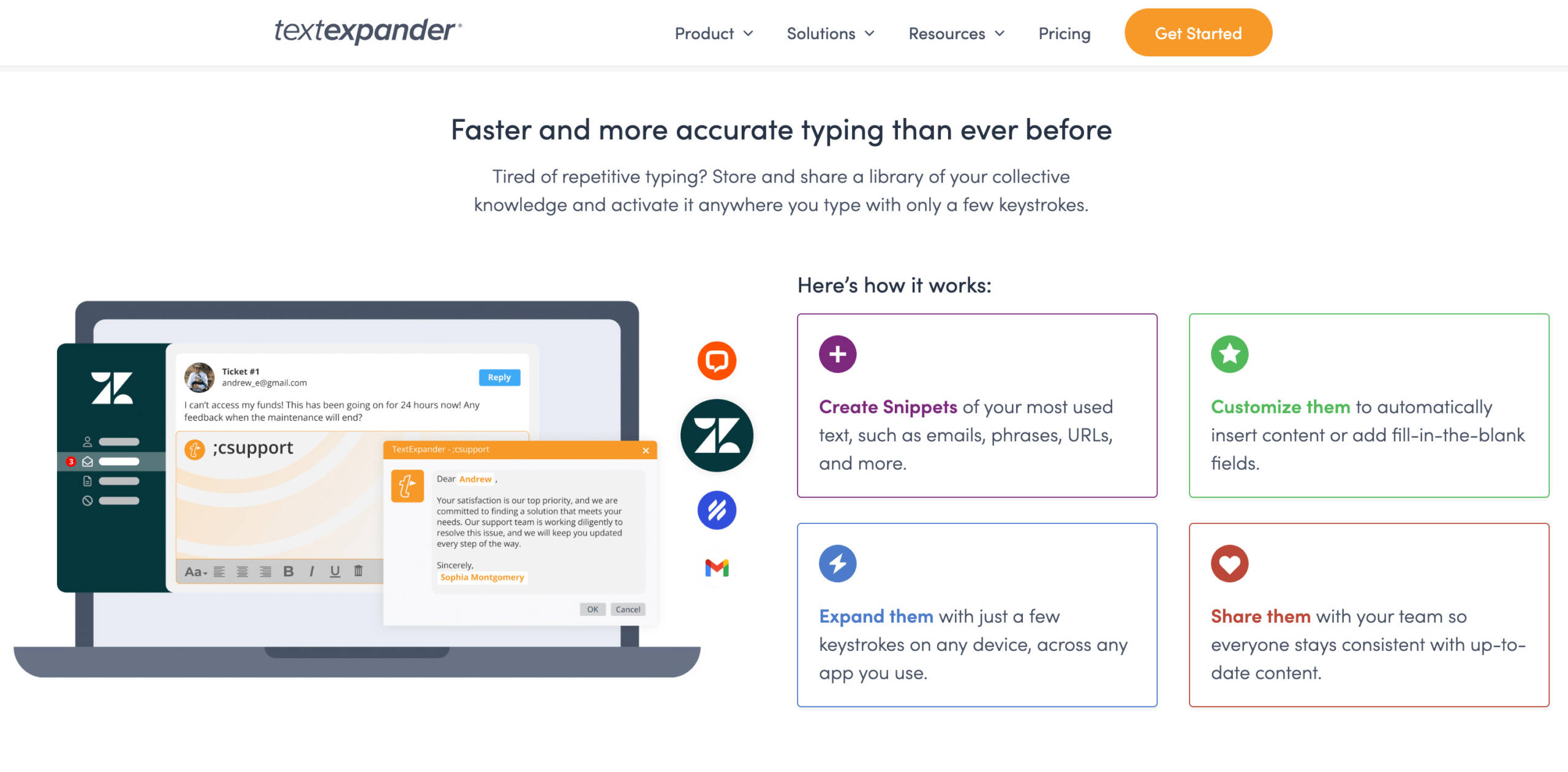
TextExpander
TextExpander is a versatile cross-platform tool that transforms text shortcuts into complete phrases, formats, or templates in any application. For example, I frequently reach out to DNA matches for collaboration opportunities, and with a simple text shortcut, I can instantly insert my standard outreach template. Additional snippets can standardize DNA match summaries and our research log entries.
This automation saves significant time by eliminating repetitive typing, reduces errors, and ensures consistent formatting across all your projects. You can maintain focus on analysis rather than remembering exact wording or switching to another application to copy text, minimizing procedural interruptions and preserving our analytical flow.
TextExpander integrates seamlessly with applications like Obsidian, enabling automated note-linking that weaves our research entries into comprehensive documentation systems.
Try it out:
- TextExpander (MacOS, Windows) – $40 USD/year – https://www.textexpander.com
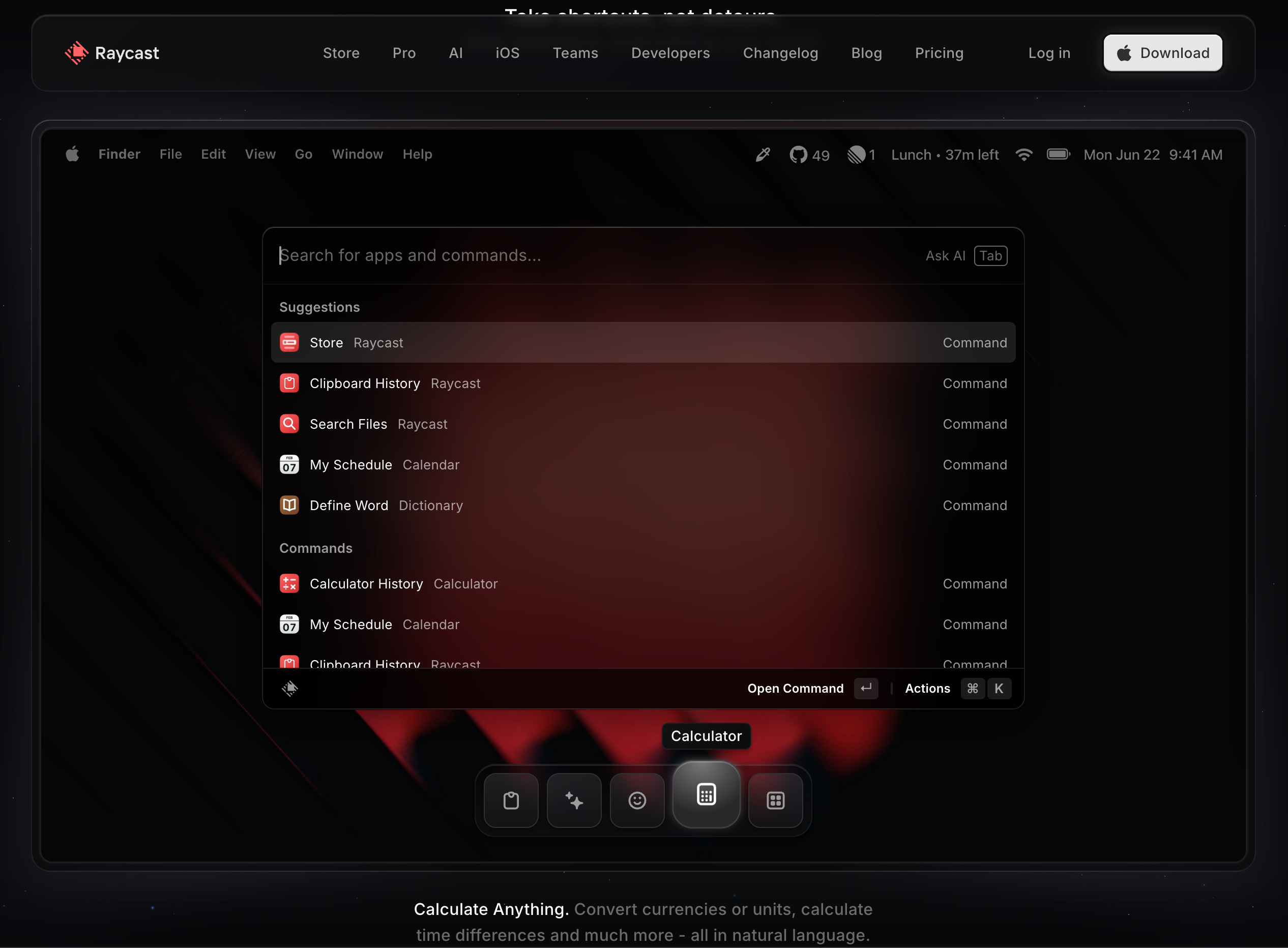
Raycast
Raycast works as a keyboard-driven command center for Mac, and launching shortly for Windows. This tool centralizes your workflow operations, letting you launch applications, run commands, or execute command sequences through one unified, searchable interface.
For example, while researching a British Home Child ancestor, a single command can open our genealogy software of choice, our note-taking application, OCR tools for document scanning, and initiate web searches, eliminating the need for manual navigation between applications. Additional features include clipboard history management and the ability to set custom Quick Links, creating a centralized command hub for your family history workflow.
By reducing application switching and window juggling, Raycast minimizes research friction and keeps your focus intact. This automation transforms disruptive navigation into streamlined research, channeling your brain power toward analytical work rather than tool management.
Try it out:
- Raycast (MacOS, Windows *soon) – Free version available – https://www.raycast.com
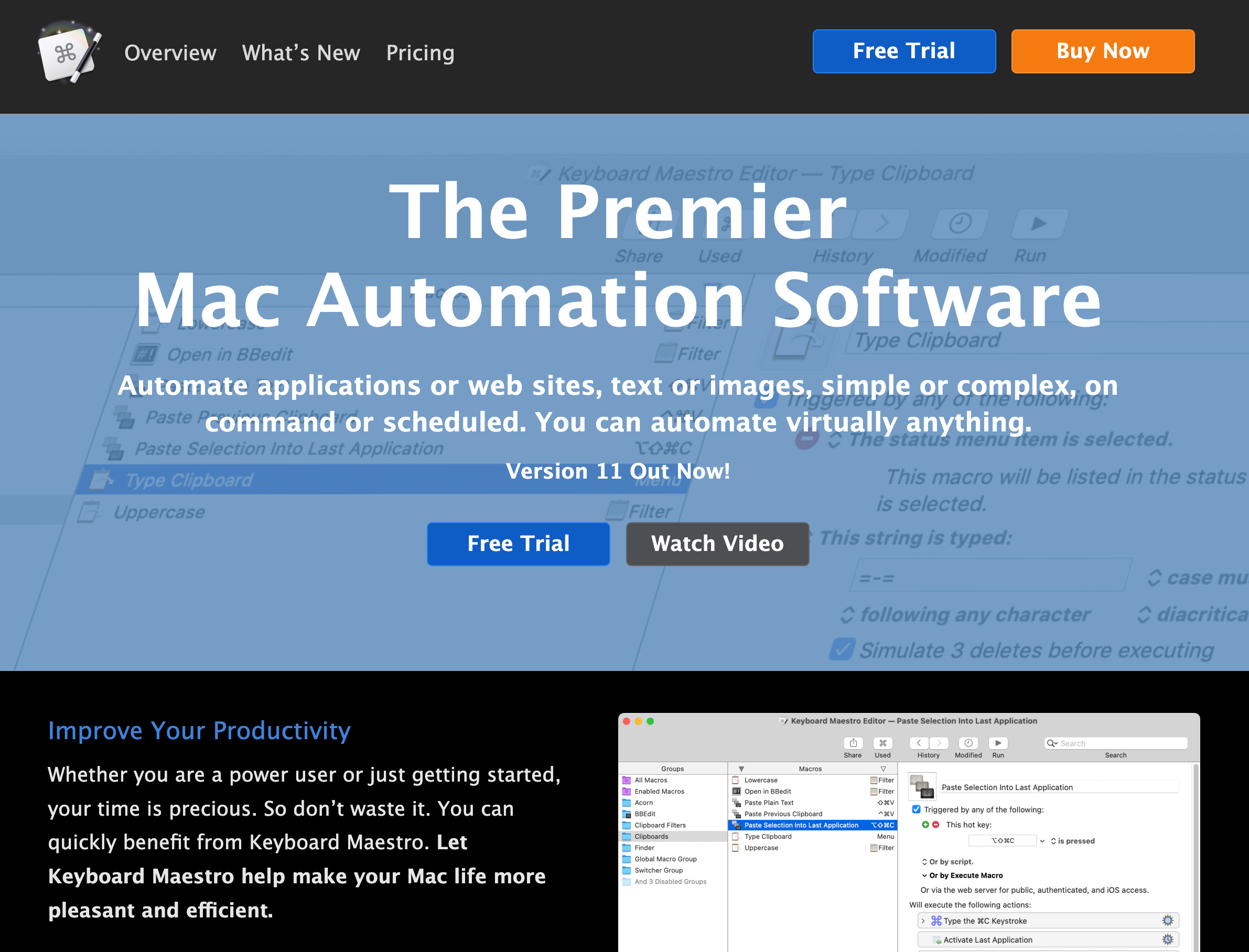
Macro tools
Macro software records and replays sequences of computer actions like keystrokes, mouse clicks, and window navigation as single, executable commands. In family history research, where we frequently follow predictable patterns like navigating databases and websites or transferring structured data between platforms, macros deliver impressive efficiency gains.
Macro customization lets you build libraries of automated routines for common workflows. This automation cuts down on context-switching while moving between applications and eliminates repeatable procedural steps. Any process that forces you into doing something one step at a time can be easily transformed into a bulk action by designing a macro.
Macros are designed to handle repetitive operational tasks while preserving your capacity for high-value work and critical evaluation. This helps enhance both accuracy and processing speed by standardizing routine procedures and eliminating manual errors.
Try it out:
- Perfect Automation (Windows) – Freeware – https://www.perfectautomation.com
- Keyboard Maestro (MacOS) – $36 USD – https://www.keyboardmaestro.com
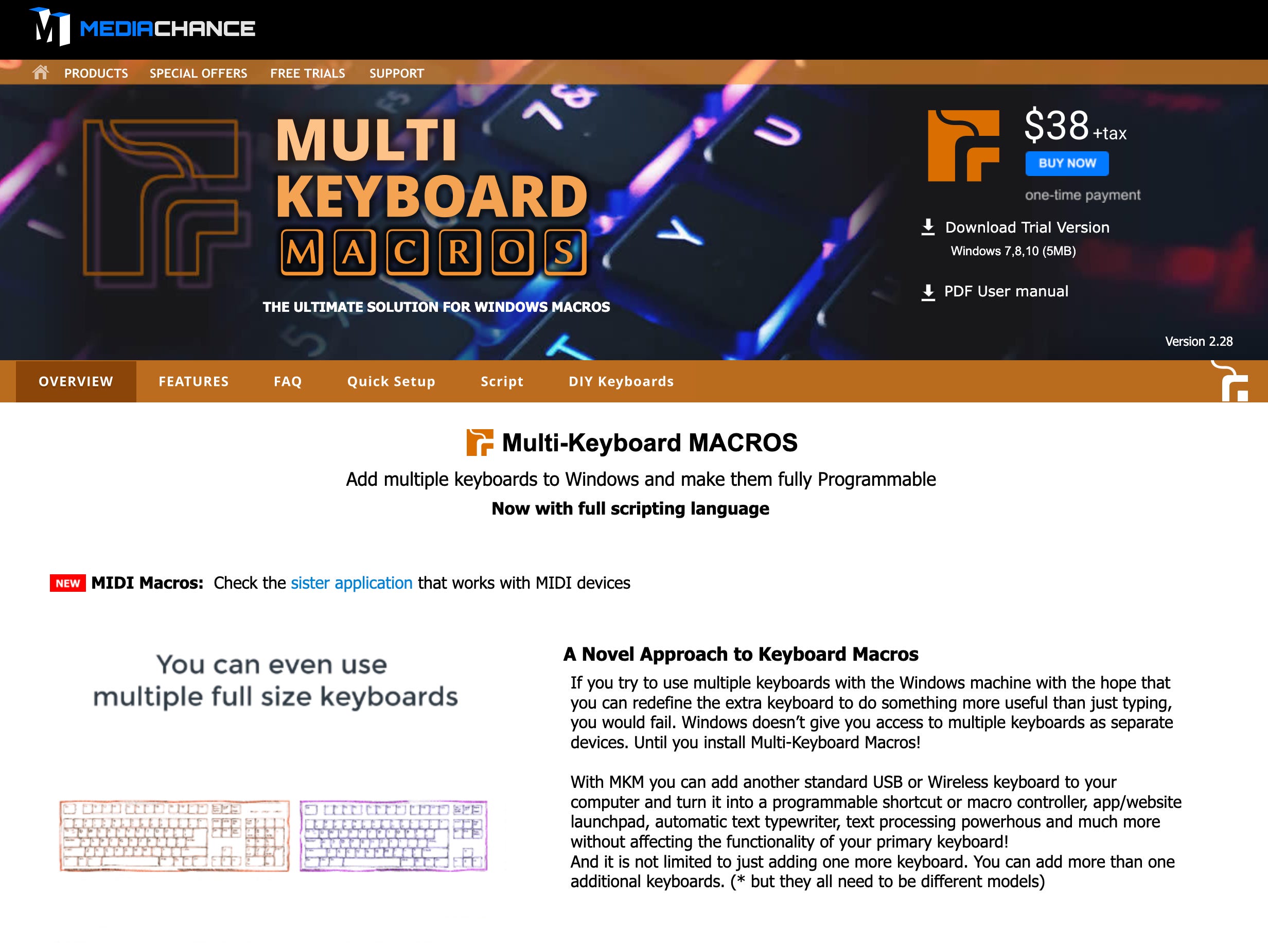
Keyboard shortcut tools
Similar to macros, custom keyboard shortcut tools like Karabiner Elements for Mac or AutoHotkey/PowerToys for Windows enable key remapping and custom shortcut creation. These tools transform multi-step processes such as launching genealogy software, switching between applications, executing searches, or inserting formatted citations into simple keystrokes.
Advanced setups can incorporate secondary mini keyboards or macro pads with dedicated keys for specific actions. Once configured, these systems enable automated execution of routine tasks with minimal effort.
This setup supports keyboard-focused operation for complex workflows, reducing reliance on mouse navigation and minimizing research interruptions. The resulting system helps to maintain our focus and can dramatically improve efficiency during extended research sessions.
Try it out:
- Karabiner Elements (MacOS) – Freeware – https://www.karabiner-elements.pqrs.org
- Multi Keyboard Macros (Windows) – $38 USD – https://www.mediachance.com/multikeyboard/
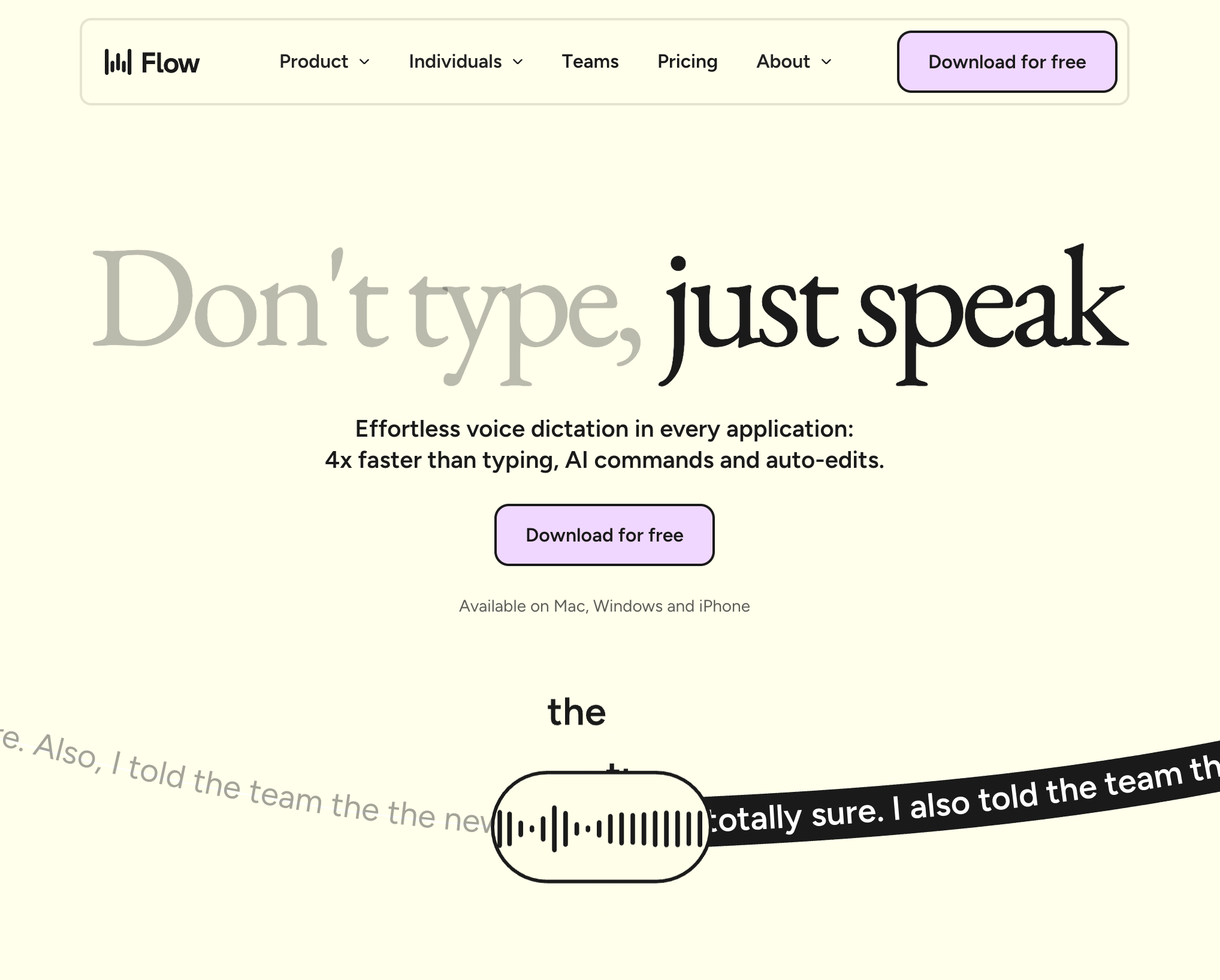
Wispr Flow
Wispr Flow works as a comprehensive voice-to-text transcription system that transforms your voice into typed text in any application. You can use this tool to capture thoughts while examining records at archives, transcribe oral family histories during relative interviews, document findings in real-time in your research log, and write messages to DNA matches, all without interrupting your research flow or requiring constant typing. It also offers the ability to easily create searchable text records for later reference, as well as rewriting text using AI prompting.
Built-in AI processing functionality converts natural speech patterns into clean, structured text. You can speak casually about “John Harrington’s life on Southwold Road in Clapton, East London” and it uses its AI capabilities to ensure proper spelling and context in your research notes. Integration capabilities let you seamlessly transfer transcribed content into your preferred genealogy software, research databases, or note-taking applications, transforming scattered verbal observations into systematic documentation.
Wispr Flow’s real-time transcription feature enables immediate capture of fleeting research insights, for instance, preserving the exact wording from cemetery transcriptions or recording spontaneous connections between family stories. This hands-free documentation approach reduces manual data entry bottlenecks, allowing you to focus on source analysis, relationship verification, and building comprehensive family narratives while maintaining detailed research logs.
Try it out:
- Wispr Flow (MacOS, Windows, iPhone) – Free version available – https://www.wisprflow.ai
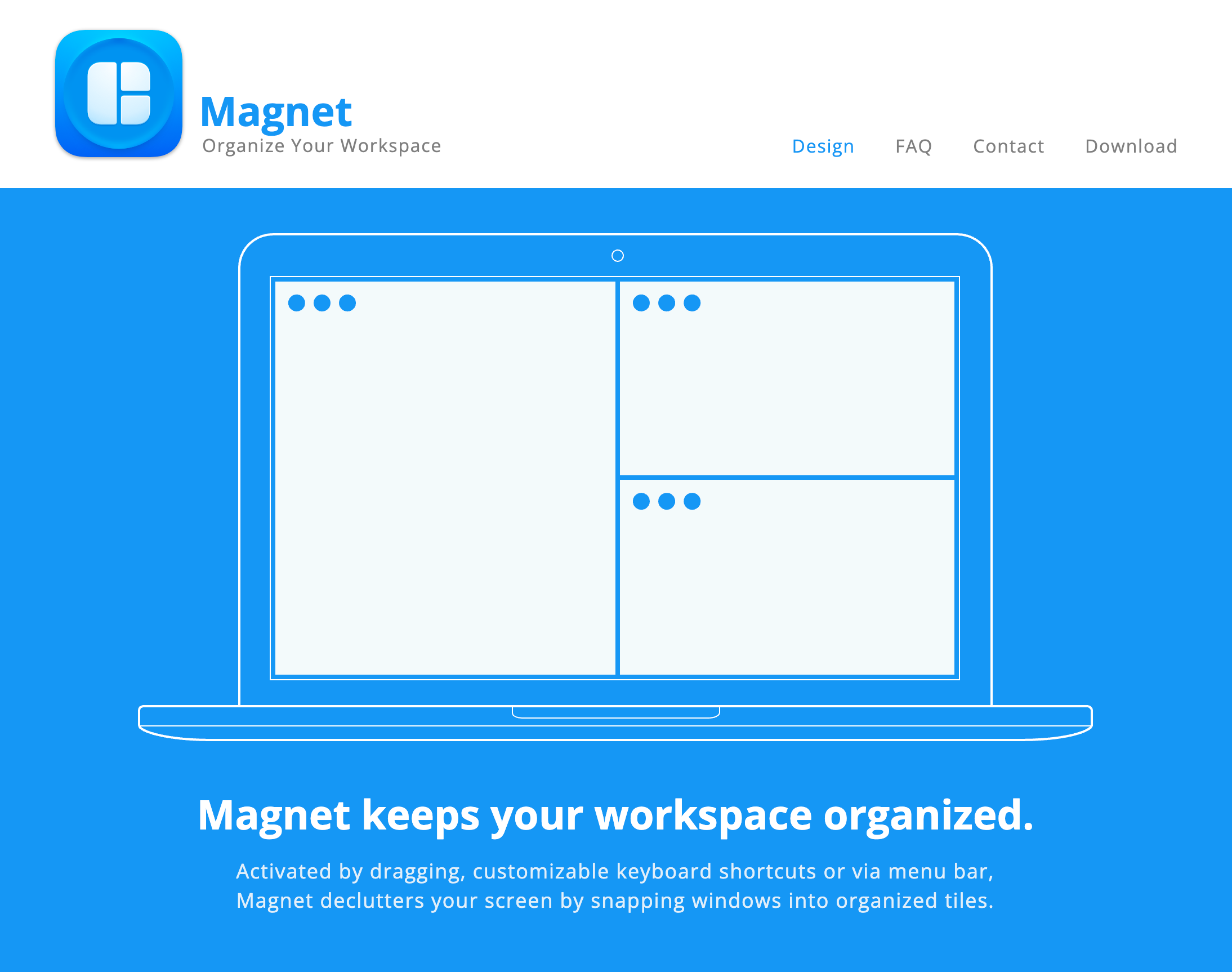
Window management tools
Genealogy workflows often require multiple applications running simultaneously such as our family tree software, browsers, image viewers and note taking tools. Without organization, this creates visual chaos and reduces efficiency through the constant window shuffling.
Window management tools address this challenge by providing automated layout control. Mac users can choose from Magnet, BetterSnapTool, and Mosaic, which enable keyboard shortcuts or gesture-based window positioning into predefined arrangements. Windows users can utilize Microsoft’s PowerToys’ FancyZones or tiling managers like FancyWM for similar functionality. Both MacOS and Windows have built-in functionality for window management, but without the inclusion of some advanced features like keyboard shortcuts and saved workspaces.
You can configure custom layouts for specific research tasks like full-screen setups for document editing, or side-by-side arrangements for record comparison and transcription. When your research focus shifts, from say note taking to DNA analysis, screen layouts can be reconfigured instantly, eliminating the hunt for buried windows.
This spatial automation reduces visual distractions and maintains organized workspaces, enabling sustained focus on our research goals.
Try it out:
- FancyWM (Windows) – Freeware – https://www.github.com/FancyWM/
- Magnet (MacOS) – $4.99 USD – https://www.magnet.crowdcafe.com

Tab saving tools
Browser tab clutter is a real challenge in family history research. Things like family trees, ancestor profiles, historical records and search results multiply rapidly, creating visual clutter and making navigation frustrating.
Tab management extensions like Workona, OneTab, or Focus Tab Groups provide elegant organizational solutions by enabling tab grouping by project or research theme such as census research, vital records, or DNA analysis. These tools let you collapse inactive groups, switch between research contexts smoothly, and save sessions for seamless cross-device continuity. Using tab management software reduces visual complexity and improves our web browsing experience.
Effective tab management becomes essential for maintaining research momentum and preventing information loss. When working with multiple ancestors simultaneously or comparing records across different time periods, organized tabs help you track evidence chains and avoid losing track of promising leads. This systematic approach reduces cognitive load, allowing you to focus on analysis rather than navigation, while ensuring that important discoveries aren’t accidentally closed or forgotten in the chaos of unorganized browsing sessions.
Try it out:
- Workona (Google Chrome) – $7 USD/month – https://www.workona.com

Knowledge management tools
Once automation handles the procedural tasks, knowledge management systems provide structured organization for your collections of documents. These tools go beyond simple storage, creating searchable, interconnected archives for all your documentation such as scans, notes, PDFs, and additional research materials. This organization enables focus on data synthesis and analysis while efficiently managing large volumes of information.
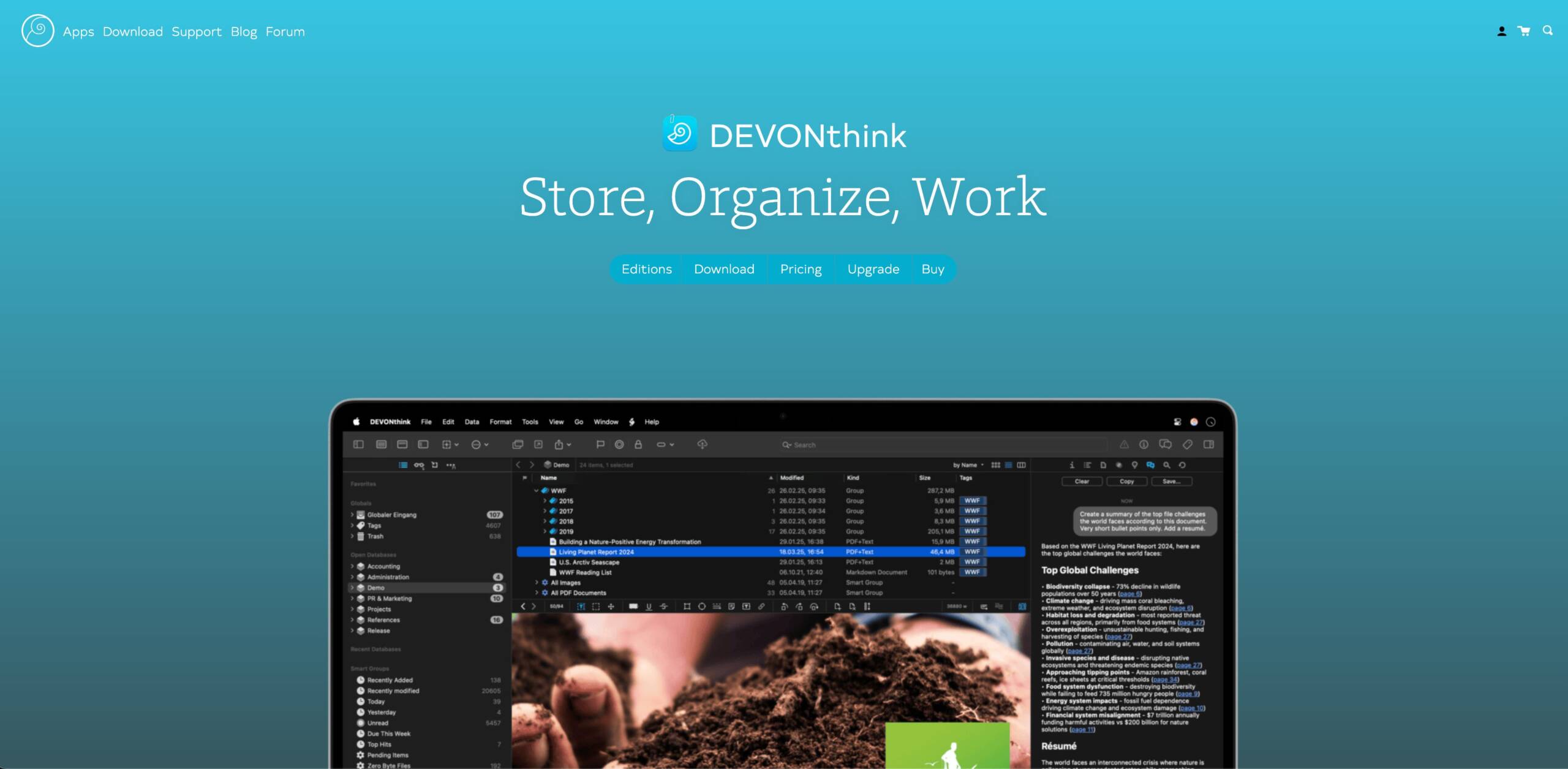
DEVONthink
DEVONthink works as a comprehensive document management system that brings together all your research materials, like documents, images, web clippings, and PDFs, into one unified, searchable database. Many genealogists organize content using one database per family tree, surname, or research topic. You can use nested folders for individual ancestors and topics containing all related documentation such as vital records, photographs, written family histories and even media like recordings or video.
Built-in OCR functionality transforms handwritten or deteriorated documents into searchable text, so you can find information through simple name or location searches. Annotation capabilities let you add follow-up tasks and contextual notes, transforming source materials into actionable research tools.
DEVONthink’s AI-driven ‘See Also’ feature identifies potentially related items within your database, for instance connecting wills to corresponding newspaper obituaries. This automated content organization reduces manual file management, allowing you to focus on pattern analysis, hypothesis development, and systematic research evaluation.
Try it out:
- DEVONthink (MacOS) – $99-199 USD – https://www.devontechnologies.com
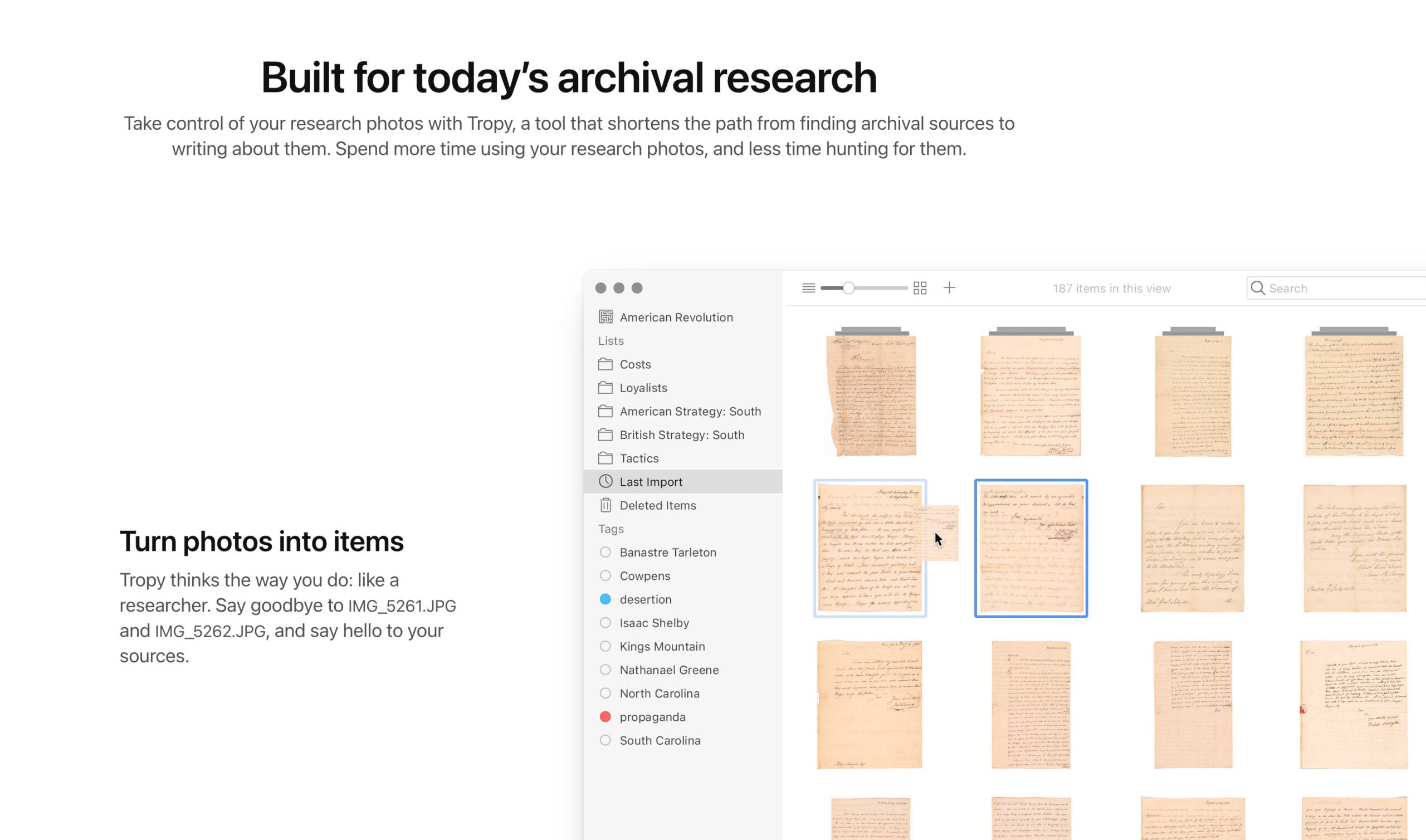
Tropy
Similar to DEVONthink, Tropy provides specialized document management for scanned materials, photographs, and digital images. You can import files and enhance them with structured metadata including tags for names, dates, document types, transcriptions, and source notes. Multi-page scans can be grouped into single items for consolidated viewing, like combining a long deed into a single record.
Tropy enables rapid searching across large image collections by name or keyword, helping you find what you’re searching for in seconds using OCR. This functionality supports efficient cross-referencing between different source types, such as connecting photographs to vital records, while maintaining organized access to your research materials.
Try it out:
- Tropy (MacOS, Windows) – Freeware – https://www.tropy.org
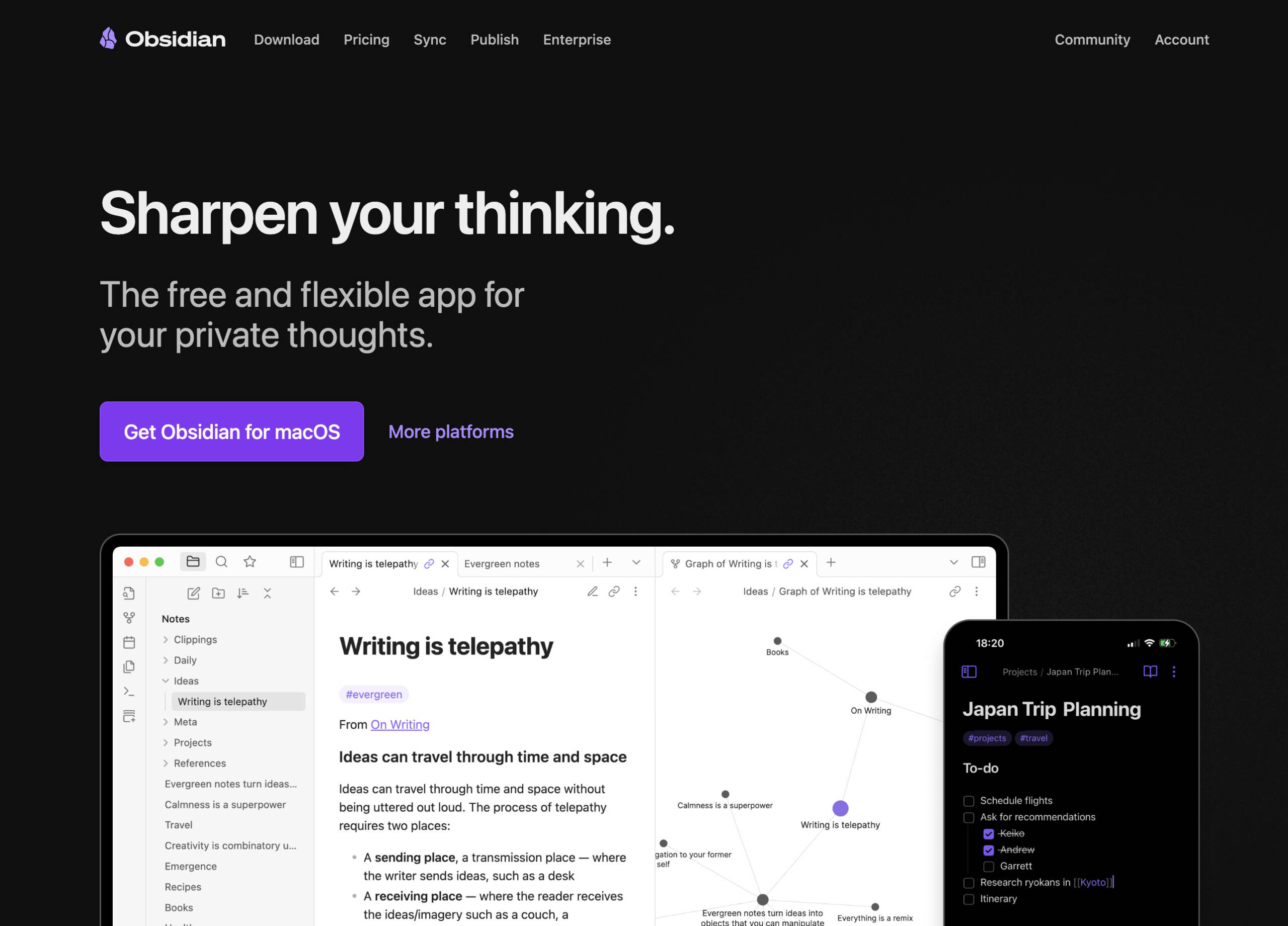
Obsidian
Obsidian is a powerful text editor and database that can create a linked digital knowledge base using individual markdown text files for research notes, people, events, locations, or sources. During research, you can create organic connections between files such as linking parents to children, sources to biographical data, or events to historical contexts.
Obsidian’s graph view provides visual mapping of these connections, revealing relationship patterns like clustered migration events or geographic correlations. It’s great for research notes, transcriptions and source summaries while working beautifully alongside traditional genealogy software.
For example, a file titled “John Maloney (b. 1861)” can link to his birth record, marriage license, and a location file for ‘St. Columban, Ontario’ complete with embedded maps or chronological data. As your database grows, search functionality, backlinking, and additional plugins like calendar integrations for timeline creation, enable systematic data organization and retrieval.
Try it out:
- Obsidian (MacOS, Windows) – Freeware – https://www.obsidian.md

Leave yourself in the best position for success
Effective research workflows weave together structured methodologies, smart time management, helpful automation tools, and organized knowledge management systems to reduce procedural overhead while maintaining a laser focus on our research. These elements support sustained family history work, whether you’re tackling long-standing brick walls or documenting already known family histories.
You can start implementing these ideas with just one tool, perhaps TextExpander for text automation or the Pomodoro technique for time management, and gradually integrate additional elements into your existing workflows. Through experimentation and refinement, you’ll develop a personalized system that enhances both your efficiency and research quality-of-life, leaving us in the best position for success.